Vietnam, a land of stunning natural beauty and vibrant culture, boasts a rich and complex religious landscape. It is a multi-ethnic, multi-cultural, and multi-religious country, recognized globally for its high degree of religious diversity. This fascinating tapestry, woven from indigenous folk beliefs and centuries of cultural exchange with influences from India, China, and the West, is key to understanding the depth of Vietnamese society. Understanding this spiritual diversity ensures a respectful and enriching travel experience, especially for visitors from diverse nations like India.
Unlike many countries where a single dominant religion shapes the cultural landscape, Vietnam showcases a unique characteristic: syncretism. Different faiths and belief systems not only coexist but actively intertwine and mutually influence one another. This results in a dynamic spiritual environment where individuals often seamlessly blend practices from various traditions, creating a deeply personal and uniquely Vietnamese expression of faith. Even those identifying with a major world religion frequently participate in traditional folk spiritual activities.
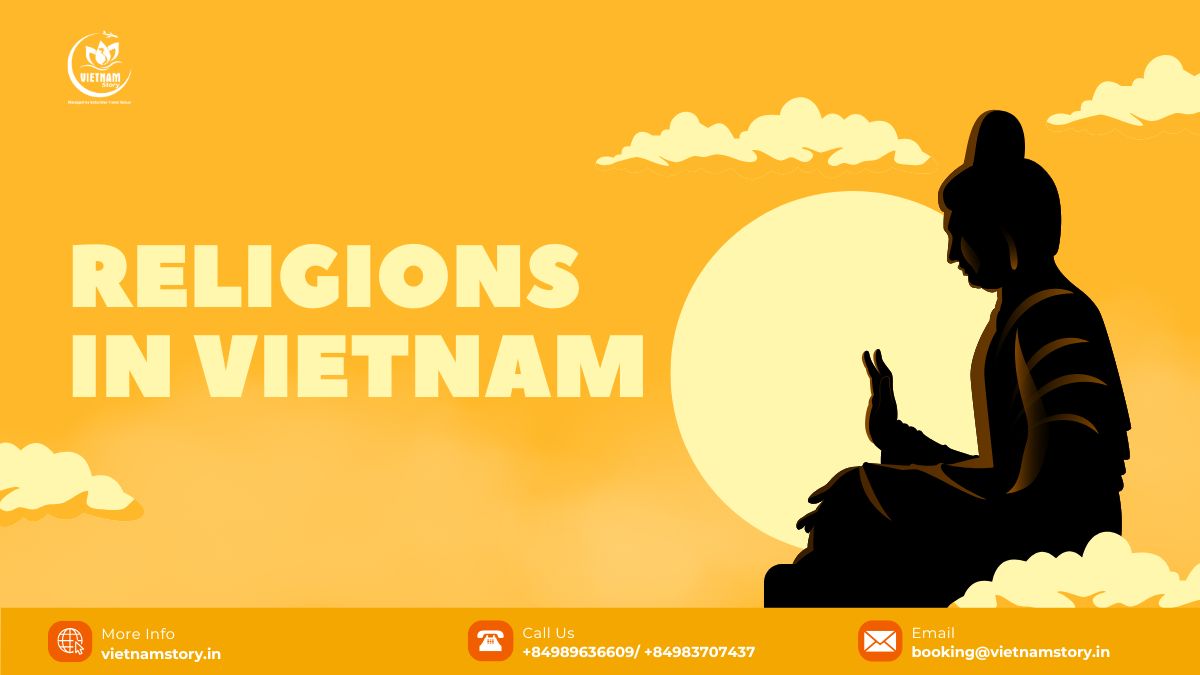
An Overview of Religious Diversity in Vietnam
Vietnam’s religious landscape is remarkably varied, encompassing everything from ancient animist beliefs to modern, organized religions. The country was ranked by the Pew Forum Institute as having a very high degree of religious diversity. This diversity stems from the introduction, interference, and fusion of indigenous religions with faiths imported from abroad over different historical periods.
As of 2022, the Government of Vietnam officially recognized 16 religions and 43 religious organizations. There are over 26.5 million believers, accounting for approximately 27% of the country’s population, served by more than 54,000 dignitaries and 135,000 positions across nearly 30,000 places of worship. However, a significant majority of the population, often stated as having “no religion,” actively practices traditional folk spiritual activities, most notably ancestor veneration.
Of the 16 officially recognized religions, nine were imported (Buddhism, Catholicism, Protestantism, Islam, Brahmanism, Baha’i, Adventist, Mormon, Minh Su Dao), while seven originated within Vietnam, primarily in the South during the early 20th century (Caodaism, Hoa Hao Buddhism, Buu Son Ky Huong, Tu An Hieu Nghia, Tinh Do Cu Si Phat Hoi Viet Nam, Minh Ly Dao, Phat Giao Hieu Nghia Ta Lon).
Historical Roots and the Spirit of Syncretism
Vietnam’s religious history is long and layered. Early Vietnamese beliefs were likely animistic and totemic, with reverence for natural forces, animals (like birds and dragons associated with founding myths), and spirits inhabiting mountains, rivers, and trees. Life was governed by beliefs and taboos designed to appease these benevolent or malevolent forces.
Beginning around the 2nd century AD, major influences arrived. Buddhism entered via two routes: Mahayana from China and Theravada (Hinayana) from India via Southeast Asia. Taoism and Confucianism also arrived, primarily through Chinese influence during periods of occupation (111 BC – 939 AD). Taoism in Vietnam largely merged with popular magic, divination, and folk practices. Confucianism, initially linked to occupying forces, later became the dominant state ideology, shaping ethics, education, and social structure, particularly from the 15th century onwards. Christianity, mainly Catholicism, was introduced by European missionaries in the 17th century and became more established during the French colonial period.
Crucially, these imported religions did not simply replace existing beliefs. Instead, they interacted and blended with indigenous Vietnamese folk religion, creating the characteristic syncretism seen today. It’s common to find elements of Taoism, Confucianism, and folk beliefs within Buddhist pagodas, and many Vietnamese participate in ancestor worship regardless of their adherence to another organized faith.
Vietnamese Folk Beliefs: The Enduring Foundation
Underpinning the entire religious structure are deeply ingrained folk beliefs and practices, often tracing back to ancient times. These permeate daily life and are practiced even by those who identify with major religions.
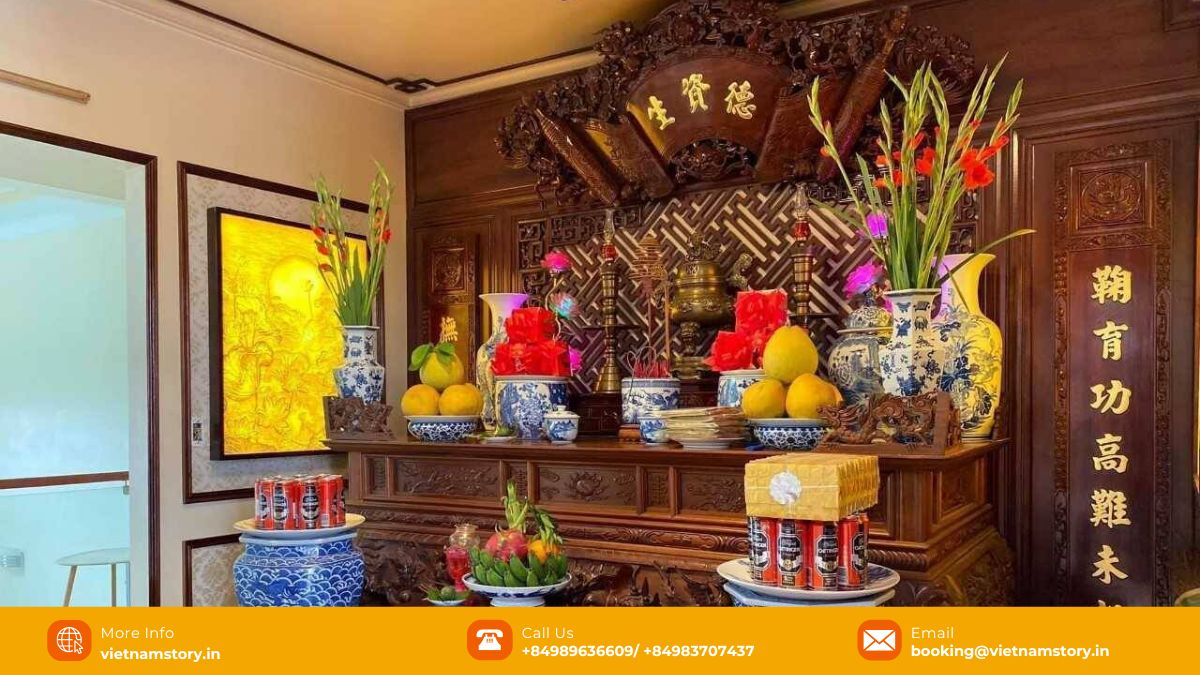
- Ancestor Veneration (Thờ cúng tổ tiên / Đạo Ông Bà): This is the most fundamental and widespread belief, practiced universally across ethnicities and regions. It emphasizes the enduring connection between the living and the deceased, filial piety, and the continuity of the family line. Families maintain altars, make offerings (food, incense, paper money), and commemorate death anniversaries (ngày giỗ). It’s considered crucial for family prosperity and guidance from ancestors.
- Worship of Nature Deities: Reflecting Vietnam’s agricultural roots, reverence for natural forces and deities associated with rivers, mountains (like the Mountain Spirit of Tan Vien), and the sky (Mau Cuu Trung – Goddess Mother) is common. Animal worship (water birds, snakes, crocodiles linked to origin myths) and plant worship (rice, banyan tree) also feature.
- Worship of Tutelary Gods (Thành Hoàng): Each traditional village typically worships a guardian deity, often a historical hero, village founder, or local spirit who protects the community. These are honored in the village communal house (đình).
- Worship of Human Figures: Besides ancestors and village gods, national heroes (like the Hung Kings, considered founders of the nation) and benevolent figures (like the Four Immortals – Tứ Bất Tử) are venerated.
- Life Cycle Beliefs & Rituals: Traditional beliefs heavily influence rituals around birth (taboos for pregnant women, naming conventions to ward off spirits), marriage, and especially funerals and death anniversaries. Geomancy (phong thủy) historically played a role in choosing burial sites.
- Occupational Beliefs: Certain professions, like fishermen, historically had specific patron deities and taboos related to their hazardous livelihoods.
- Spirit Worship & Animism: A general belief persists that the world is inhabited by spirits (ghosts, deities) that can influence human life, requiring appeasement through rituals and offerings (like the Feast of Wandering Souls – Tết Trung Nguyên).
Major Religions Practiced in Vietnam
Buddhism (Phật giáo)
Buddhism is the largest organized religion in Vietnam, with approximately 10 million followers and over 20,000 pagodas. Introduced in the 2nd century AD, it flourished significantly during the Ly (1010-1225) and Tran (1225-1400) dynasties, sometimes acting as a state religion and influencing art, culture, and ethics. Vietnamese Buddhism is predominantly Mahayana, influenced by Chinese Chan (Zen) traditions (like the native Truc Lam school), but Theravada Buddhism is practiced by the Khmer ethnic minority in the Mekong Delta.
Vietnamese Buddhism often incorporates elements of Taoism and folk beliefs, focusing on earthly concerns like merit-making, prayers for wellbeing, and honoring ancestors alongside the pursuit of enlightenment. Key practices include chanting, meditation, offerings, and participation in festivals like Vesak (Phật Đản – Buddha’s Birthday). Monks and nuns play important community roles.
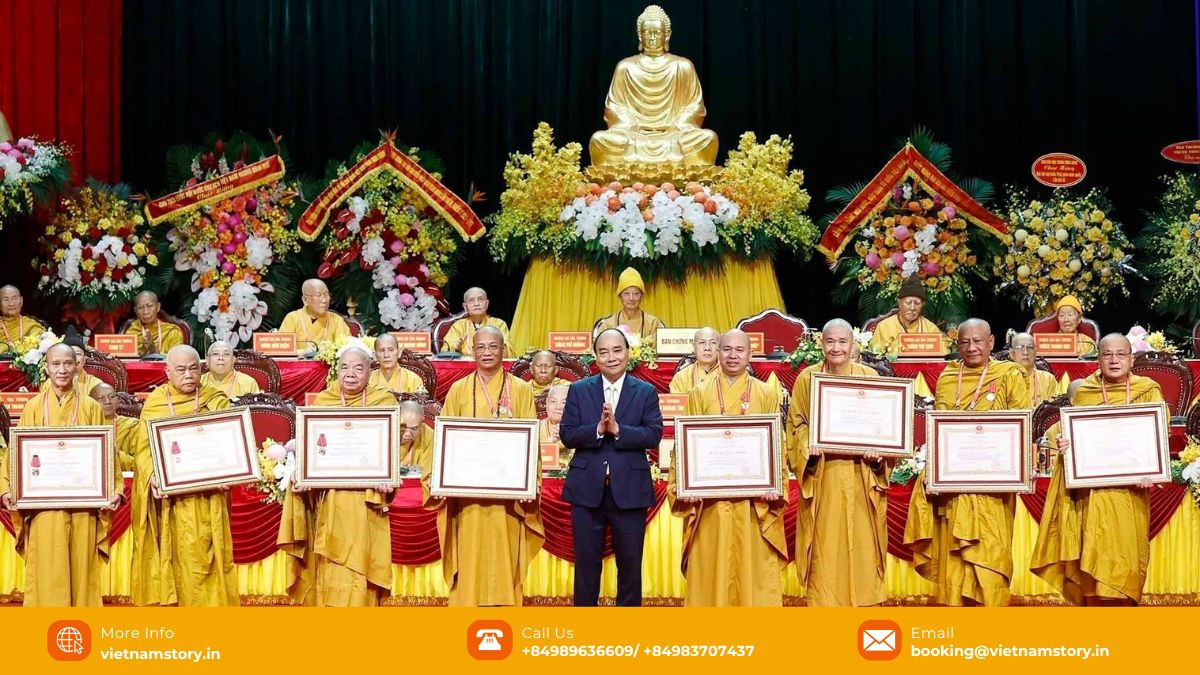
Catholicism (Công giáo)
Catholicism is the second-largest organized religion, with around 6 million followers and over 6,000 churches. Introduced by European missionaries in the 17th century, its influence grew during the French colonial era. Despite historical periods of tension and persecution (particularly in the 19th century due to perceived links with foreign powers and conflicts with Confucian values/village traditions), Catholicism has become an integral part of the religious landscape, especially in central and southern regions. Practices generally follow global Catholic traditions, but inculturation means Vietnamese cultural elements are often present in worship and community life. Major holidays like Christmas and Easter are observed.
Taoism (Đạo giáo)
While not a highly organized religion in modern Vietnam, Taoism’s philosophical influence is significant. Concepts like harmony with nature, balance (yin-yang), living according to the Tao (the Way), and practices like feng shui, traditional medicine, and certain divination methods are deeply embedded in Vietnamese culture and often blended with Buddhist and folk practices. Historically, Taoist priests were associated with magic, healing, and rituals, holding sway over the spirit world for common people.
Confucianism (Nho giáo)
Primarily an ethical and philosophical system rather than a religion in the Western sense, Confucianism profoundly shaped Vietnamese society, governance, and education for centuries, especially under the Le dynasty (15th C onwards). Its emphasis on filial piety, social hierarchy, respect for authority, education, and ancestor veneration strongly influenced Vietnamese values. While its dominance as a state ideology waned, its ethical principles continue to resonate in family and social relationships. The Temple of Literature in Hanoi is a key historical site dedicated to Confucius.
Islam (Hồi giáo)
Islam in Vietnam represents a smaller community, primarily followed by the Cham ethnic minority residing mainly in central and southern Vietnam (Ninh Thuan, Binh Thuan, An Giang provinces) and some urban centers. Introduced long ago, possibly through trade routes, it has maintained its presence. Cham Muslims practice Sunni Islam, observe key traditions like Ramadan and daily prayers, and maintain distinct cultural practices and mosques, often reflecting unique architectural blends.
Protestantism (Tin Lành)
Introduced later than Catholicism (around 1911) and spreading more widely from the 1920s, Protestantism has a smaller but growing following compared to Catholicism. Various denominations exist, and its presence is more notable in certain urban areas and among some ethnic minority groups.
Indigenous Vietnamese Religions
A unique feature of Vietnam’s religious landscape is the emergence of indigenous religions, particularly in the south during the early 20th century, often blending existing traditions in new ways.
Cao Dai (Đạo Cao Đài)
Founded in Tay Ninh province in 1926, Caodaism is perhaps the most famous indigenous Vietnamese religion. It is explicitly syncretic, aiming to unite teachings from Buddhism, Taoism, Confucianism, Christianity, Islam, and even figures like Victor Hugo and Sun Yat-sen under the worship of a Supreme Being (Cao Đài, symbolized by the Divine Eye). It has a complex hierarchical structure resembling the Catholic Church, colorful temples (like the Holy See in Tay Ninh), and emphasizes principles like nonviolence, compassion, and ancestor veneration. It once held significant political and military influence in the south.
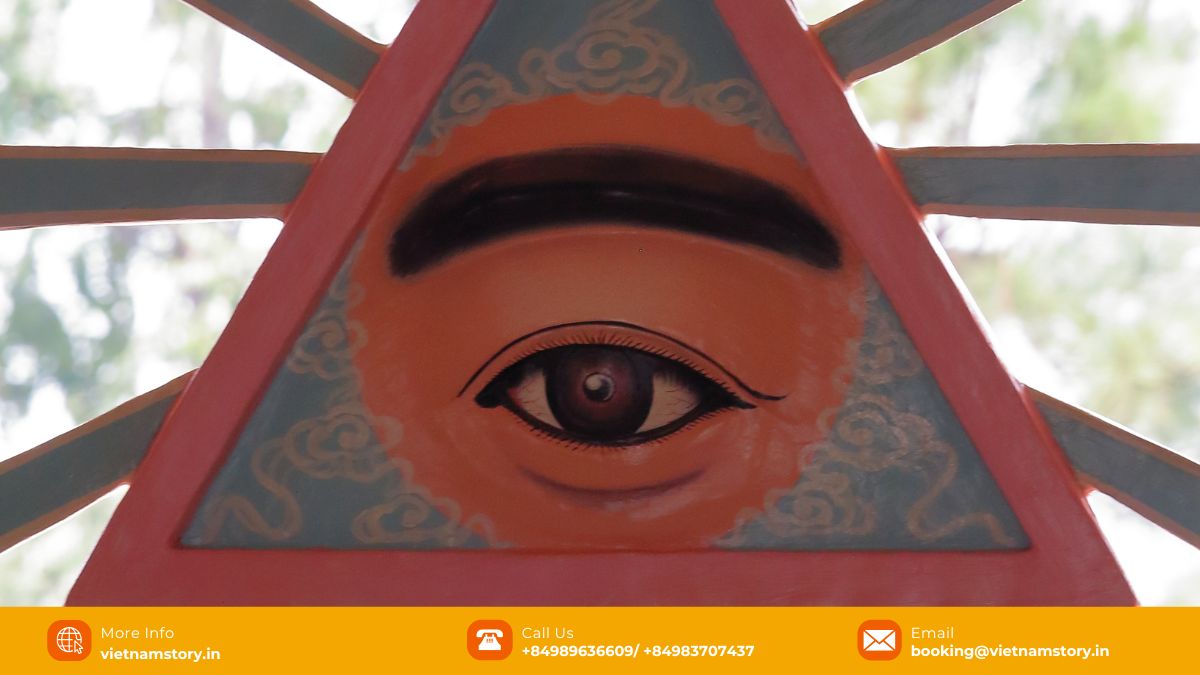
Hoa Hao Buddhism (Phật giáo Hòa Hảo)
Founded in 1939 in the Mekong Delta by Huynh Phu So, Hoa Hao Buddhism is a reformist Buddhist movement tracing its roots to the 19th-century Buu Son Ky Huong tradition. It emphasizes simplified practices, focusing on home worship (often dispensing with temples and complex rituals), peasant life, faith healing, social engagement, and patriotism. Huynh Phu So drew on millenarian prophecies (belief in an impending apocalypse followed by a new era under Maitreya Buddha). Like Cao Dai, it amassed a large following (historically around a million) and wielded significant socio-political influence, particularly in the Mekong Delta.
Religious Freedom and Government Regulation
The Constitution of Vietnam (Article 24) states that citizens “can follow any religion or follow none” and “all religions are equal before the law,” guaranteeing freedom of belief and religion. The 2016 Law on Belief and Religion provides a detailed legal framework for religious activities, registration of organizations, state management, and handling violations. Supporting decrees and other laws (like Land Law) also contain relevant provisions.
However, the practice of this freedom occurs within a context of state management and regulation. Religious activities generally need to be conducted by registered organizations. The government aims to balance religious freedom with maintaining social stability and national unity. Historically, there has been tension between state control (inherited partly from Confucian ideals of state orthodoxy) and religious groups, especially those perceived as challenging state authority or linked to dissent (as seen with some Buddhist sects, Catholics, Cao Dai, and Hoa Hao in the past, and sometimes newer religious phenomena today).
Internationally, organizations like the US Commission on International Religious Freedom (USCIRF) and Freedom House have expressed concerns, often citing difficulties with registration (especially for newer or smaller groups), requirements for official approval for activities, and surveillance, rating Vietnam relatively low on metrics of religious freedom despite significant growth in religious life over recent decades.
Regional Distribution of Believers
Religious followers are found throughout Vietnam, but concentrations exist. The Southeast region (including Ho Chi Minh City and surrounding provinces) and the Southwest (Mekong Delta) have the highest percentages of believers (around 30% and 27% respectively). The Northern region accounts for about 14%, the Central Highlands 9%, the South Central Coast 9%, and the North Central region 6.5%.
Religious Festivals and Celebrations
Religious festivals are vibrant expressions of faith and culture in Vietnam.
- Tet Nguyen Dan (Lunar New Year): While a national holiday, it’s deeply intertwined with ancestor veneration and folk beliefs, involving visits to pagodas and temples for blessings.
- Vesak (Phật Đản): Buddha’s Birthday (usually in April or May) is widely celebrated with processions, chanting, lantern releases, and charitable activities.
- Feast of the Wandering Souls (Tết Trung Nguyên / Vu Lan Bồn): Held on the 15th day of the 7th lunar month, this combines Buddhist traditions of honoring parents (Vu Lan) with folk beliefs of making offerings to appease wandering, ancestor-less souls.
- Christian Festivals: Christmas and Easter are celebrated by Catholic and Protestant communities, often with public decorations and services, especially in areas with larger Christian populations.
- Cao Dai Festivals: Major ceremonies are held at the Tay Ninh Holy See and other temples, particularly on the 9th day of the 1st and 8th lunar months.
- Kate Festival: The most important festival for the Cham people (both Hindu and Muslim), celebrating their cultural heroes and deities.
- Local Festivals: Numerous local festivals honor village tutelary gods or historical figures, often involving rituals, processions, and traditional games.
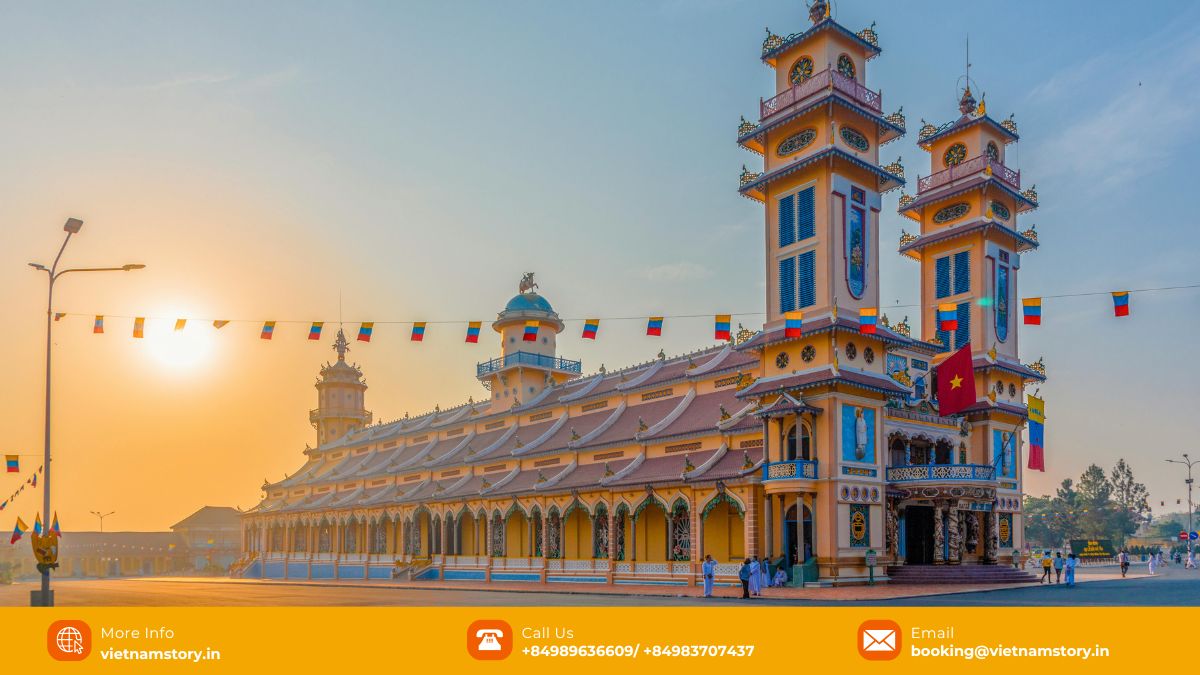
Top 7 Well-Known Religious Destinations in Vietnam
Vietnam is dotted with thousands of pagodas, temples, churches, and other religious sites. Here are seven prominent destinations offering insights into the country’s diverse faiths:
- Temple of Literature (Văn Miếu – Quốc Tử Giám), Hanoi: A significant historical site dedicated to Confucius and Vietnam’s first national university, representing the enduring legacy of Confucianism.
- One Pillar Pagoda (Chùa Một Cột), Hanoi: An iconic, architecturally unique Buddhist pagoda dating back to the Ly Dynasty, symbolizing purity and resilience.
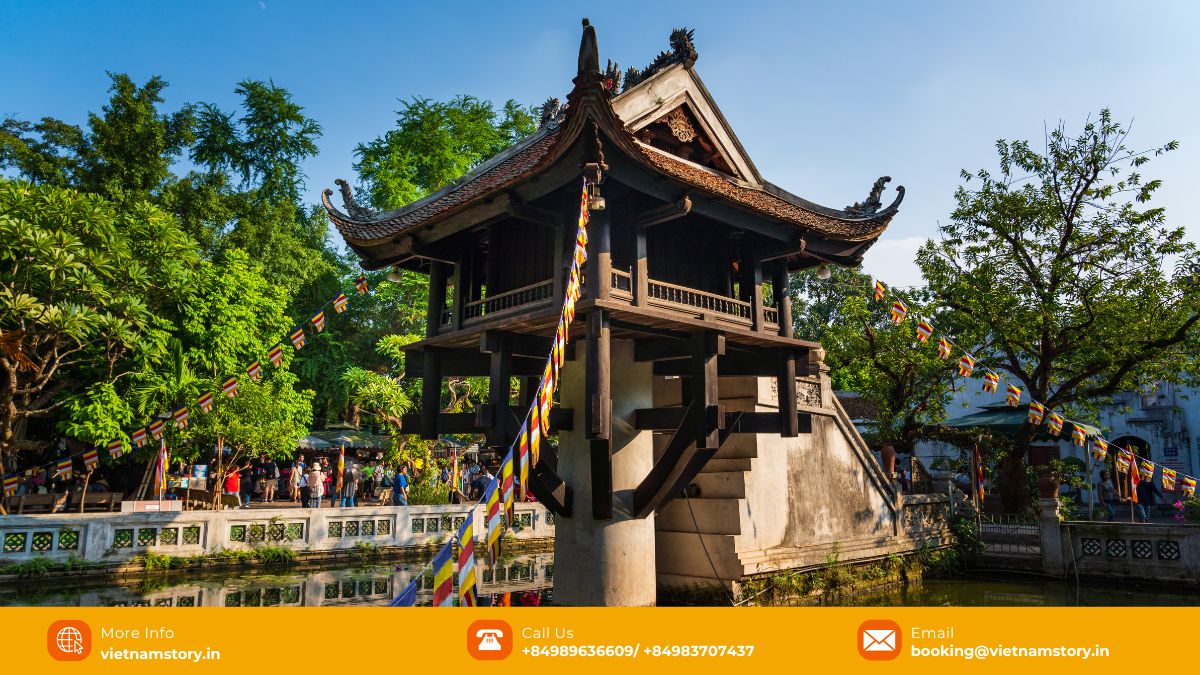
- Thien Mu Pagoda (Chùa Thiên Mụ), Hue: A historic seven-story Buddhist pagoda overlooking the Perfume River, an emblem of the former imperial capital Hue.
- Cao Dai Holy See, Tay Ninh: The vibrant and architecturally unique headquarters of the Cao Dai faith, showcasing its syncretic blend of beliefs and stunning visual symbolism.
- My Son Sanctuary, Quang Nam: The evocative ruins of an ancient Champa kingdom temple complex (primarily Hindu influences), offering a glimpse into the pre-Vietnamese religious culture of the region.
- Da Nang Cathedral (Pink Church), Da Nang: A striking pink Catholic cathedral built during the French colonial period, a major landmark in Da Nang.
- Nha Trang Cathedral (Stone Church), Nha Trang: An imposing Gothic-style Catholic cathedral perched on a small hill, serving the Catholic community in the coastal city of Nha Trang.
Conclusion
The religious landscape of Vietnam is a complex, dynamic, and deeply fascinating reflection of its long history, rich culture, and the spiritual lives of its people. Characterized by remarkable diversity, a strong foundation of folk beliefs (especially ancestor veneration), and a unique spirit of syncretism, religion permeates many aspects of Vietnamese society. While navigating the relationship between religious freedom and state management presents ongoing challenges, the overall picture is one of vibrant coexistence and continuous evolution. For travelers, understanding and appreciating this intricate tapestry of faiths offers invaluable insights, fosters respectful interactions, and ultimately leads to a more meaningful and enriching experience in Vietnam.
READ MORE: Unveiling the rich tapestry of Vietnamese Culture: A Journey for the senses